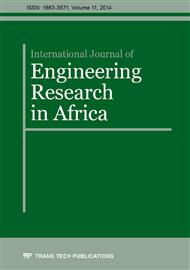p.1
p.11
p.27
p.45
p.51
p.59
p.73
Analysis of Energy Dissipation with Stress Wave during Impact Coal Cutting
Abstract:
Impact coal cutting is a new kind of coal cutting method, totally different from conventional coal cutting in mechanism. To increase the blocky coal in long-wall coal face with low energy consumption, impact coal cutting is a good way to go. In this paper, an analysis of energy dissipation in impact coal cutting using stress wave is carried out. Firstly, the production, transmission and dissipation of energy are analyzed during the process of coal impact cutting, and the energy distribution area is also obtained. Secondly, the transmission rule of stress and energy are studied by the method of stress wave; through measuring the amplitude attenuation quantity of the first and any other cycle in oscillograph, the attenuation radio can be worked out. Lastly, the propagation process of energy was analyzed based on the impacting rule and propagation rule of energy; the relation between impacting consumption of energy and minimal irreversibly lost energy is expounded. It is pointed out that if the coal block is destroyed, the impacting consumption of energy must be more than the minimal irreversibly lost energy.
Info:
Periodical:
Pages:
45-50
Citation:
Online since:
October 2013
Authors:
Keywords:
Price:
Сopyright:
© 2014 Trans Tech Publications Ltd. All Rights Reserved
Share:
Citation:


